

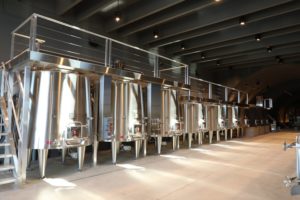 Signorello Estate. Ray Signorello Sr., purchased property in the hills next to the southern part of the Silverado Trail in 1977; his original intent was to own a summer home away from San Francisco Bay area where he lived at the time. Neighbors, including Frank Altamura were already growing wine grapes; in 1980 with the help of his son, Ray Jr., they planted vineyards on the property. The Signorello’s initially sold the grapes to other wineries including Cakebread, Caymus and William Hill.
Signorello Estate. Ray Signorello Sr., purchased property in the hills next to the southern part of the Silverado Trail in 1977; his original intent was to own a summer home away from San Francisco Bay area where he lived at the time. Neighbors, including Frank Altamura were already growing wine grapes; in 1980 with the help of his son, Ray Jr., they planted vineyards on the property. The Signorello’s initially sold the grapes to other wineries including Cakebread, Caymus and William Hill.
Realizing the premium quality of wines being produced from their vineyard, the Signorello’s decided to build their own winery. Their winery permit was approved in 1980. In 1985, due to a larger than normal crop, they kept their grapes for their own use and produced 2,500 cases of Chardonnay made at what was Koves-Newlan Winery near Yountville (now the site of Silenus Vintners). This was the the first vintage bottled as Signorello Estate; Bruce Newlan assisted with the winemaking that year. Steve Devitt was Signorello Estate’s early winemaker. Ray Sr’s dreams of owning a summer house in Napa transitioned into building a physical winery. It was designed by Robert Keenan and completed in 1988.
Ray Sr., (died in 1998) used to work for the San Francisco Chronicle and later was an executive for North Pacific Mines LTD in Vancouver and a mining promoter. He was also involved in several other businesses including in the early 1970s, Gassy’s Joynt in Gastown, Vancouver, a cabaret located at 6 Powell Street known for their live Flamenco music. Gassy’s didn’t last for more than a couple of years, undergoing different ownership and numerous name changes. The building is still standing. And Ray was also involved in California Music Productions, a music promotion business.
Ray Signorello Jr. was born in San Francisco, California but raised in West Vancouver, Canada. In addition to Signorello Estate, Ray also operates several other wine brands including S by Signorello whose first vintage was in 2019 which focuses on a Napa Valley non-estate Cabernet Sauvignon, Trim is an affordable Chardonnay and Cabernet Sauvignon from select vineyards throughout California and Edge Wines, a premium and affordable Sonoma County Cabernet Sauvignon. Another brand, Fuse is no longer being produced.
We have seen numerous bottlings from some of these brands for sale in various wine shops in Vancouver. Ray was a partner in California Cult Classics, Canada’s first premium-wine club based in Vancouver which is currently owned and operated by winemaker Frank Gigliotti. Ray also founded and operates Evolution Fine Wines; based in Vancouver, their focus is on distributing fine French, Italian and American wines to mostly the western and central Canadian markets. And interesting to note, one of Ray’s immediate vintner neighbors in Napa Valley is James Cole Winery, also owned by a Canadian, James Harder and his wife Colleen.
Building, Evolution Fine Wines, Vancouver BC
The entire Signorello property is 60 acres of which 35 acres are planted to vines. The property features a west facing and an east facing hillside vineyard. The west facing block is easily seen from the Silverado Trail, while the east facing vineyard is located higher up the slopes and ‘hidden’ from view from the valley floor. Despite each vineyard being so close to each other there are dramatic differences in soil types and even in temperatures.
Signorello Estate is located just off of the southern part of Silverado Trail nestled in the foothills of the Vaca mountain range, about a 10-minute drive from downtown Napa. Their long driveway leads up a hill to both the winery and hospitality center.
Visitors who were on site before the Atlas Peak fires of October 2017 most likely remember the distinctive front of the winery building. One half of the stone façade was covered with perfectly groomed ivy. The winery was in a stunning location with intimate views of the southern part of the valley below. A gorgeous pool overlooked the vineyards. Following the 2017 fires, a temporary hospitality center was used to host visitors until April 2024.
After the multi-year construction, the new winery and hospitality spaces were completed by June 2024 and opened again for visitors that same month.
Select Wines
Chardonnay
Some of the oldest Chardonnay vines still producing grapes in Napa Valley are located at the bottom of the Signorello Estate driveway on the south/right hand side as one faces the winery. These are a variety of clones, primarily Wente and were planted in 1980. This old-vine Chardonnay shortlist from Napa Valley includes Haynes Vineyard in Coombsville planted in 1967, School House from 1968, Signorello from 1980, Vineyard 7 & 8 from 1981 and a CHANDON California owned block of Chardonnay dating from 1982. Every year Signorello produces Hope’s Cuvee Chardonnay, a wine named in homage of Ray Junior’s mother, Hope Signorello.
Winemaker Priyanka French became the lead winemaker at Signorello Estate in 2019; as of July 2024, she is no longer at Signorello. She invited fellow winemaker Steve Matthiasson, who she worked with at Dalla Valle Vineyards, to visit the property with no intention of taking on any more consulting clients. They agreed to meet at the bottom of the driveway. But then Steve noticed the old Chardonnay vines and immediately walked into the rows. His interest in working with these vines outweighed his desire to increase his work load. Matthiasson along with Celia Welch are currently Signorello Estate’s consulting winemakers.
The 2020 Signorello Estate Hope’s Cuvee Chardonnay is 100% varietal; this wine was produced from the original vines, a newer block and a later pick harvested for clonal differences. The grapes were whole-cluster pressed and fermented entirely with indigenous yeast. In fact until more recently, UC Davis had no record of the strain of yeast growing on their Chardonnay but have since added ‘Signorello yeast’ to their database. This wine was put through 50% malolactic fermentation; it was fermented and aged for 8 months sur lie in French oak barrels of which some were 228L and some 500L puncheons. Due to the resulting smoke taint from area wildfires, this was the only Signorello Estate wine bottled in 2020.
This wine is medium to deep gold; the highly attractive aromatics include honeycomb and honeysuckle, along with stone fruited scents of apricot, yellow peach and nectarine accompanied by ripe mango and vanilla bean. The texture is a hallmark character of this wine; it is silky smooth with a supple mouth feel that is almost briny/saline. It is not viscous, which is an important distinction. Simply put, this wine glides effortlessly across the palate. Some of the aromas are mirrored on the palate including stone fruit flavors of apricot and yellow peach accompanied by ripe pineapple and notes of vanilla. This latter aromatic is most noticeable on the finish. This is in no way an oaky or buttery expression of the variety. It offers a simultaneous elegance but also a richness. Balanced. This bottling is highly worth seeking out, both for its aromatics, texture and flavor profile but also because of its historical pedigree. It was bottled un-fined and unfiltered.
The 2006 Signorello Estate Vieilles Vignes Chardonnay is from the section of their vineyard planted in 1980. Only a partial malolactic fermentation gives this wine a rounded feel with not much buttery influence sometimes are found in California styled Chardonnays. Nuances of toasted oak, a slight toasted nutty characteristic and honeysuckle intermingle with attractive fruit flavors including pear and apple.
The 2000 Signorello Vineyards Hope’s Cuvée. For reference, we tasted this wine out of a 12 L bottle 24 years post vintage. This wine is deep gold in color; the bouquet shows scents of beeswax, dried nectarines and peaches, ripe pineapple, cashew nut, roasted pine nuts and hay. This wine at this age has stayed away from the more caramel and vanilla characteristics that sometimes show with tertiary aromatics on aged Chardonnay, although these attributes are expressed a little more as the wine evolves in the glass. The palate reveals flavors of hazelnut, vanilla, honeycomb, yellow peach, apricot and ripe cantaloupe. Its texture offers a light creamy viscosity. It is drinking remarkably well for this age.
Reds
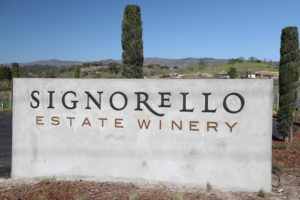
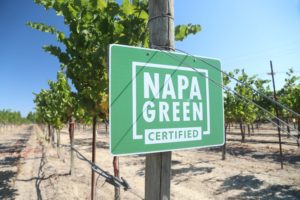
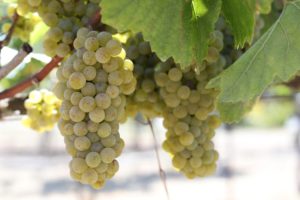 The 2021 Signorello Signori (meaning gentleman in Italian) is 84% Cabernet Sauvignon, 9% Merlot, 4% Cabernet Franc and 4% Malbec. This wine is deep ruby and opaque with an amaranthine rim; the elegant bouquet offers immediate floral notes including violets along with bittersweet chocolate, damp earth, sweet tobacco spice, dark raspberry and mulberry. On the palate there are flavors of red plum, currant, raspberry, cherry and a note of espresso. Balance is word that perhaps is bandied around almost too often, but it most certainly is the best adjective to describe the cadence of this wine across the palate. The texture of the tannins are seamless and sport a lightly grainy feel. The finish is bright and mouth watering, but not tart – with flavors of dried tobacco leaf and smoked sage. We noted the word savory to describe its lingering character. Both the tannins and fruit parallel each other for some time; this wine is enjoyable to drink in it youth. The grapes were fermented using indigenous yeast and aged for 18 months in 60% new French oak. This was the first year that this particular wine was put into distribution as previously it was sold only direct to consumer.
The 2021 Signorello Signori (meaning gentleman in Italian) is 84% Cabernet Sauvignon, 9% Merlot, 4% Cabernet Franc and 4% Malbec. This wine is deep ruby and opaque with an amaranthine rim; the elegant bouquet offers immediate floral notes including violets along with bittersweet chocolate, damp earth, sweet tobacco spice, dark raspberry and mulberry. On the palate there are flavors of red plum, currant, raspberry, cherry and a note of espresso. Balance is word that perhaps is bandied around almost too often, but it most certainly is the best adjective to describe the cadence of this wine across the palate. The texture of the tannins are seamless and sport a lightly grainy feel. The finish is bright and mouth watering, but not tart – with flavors of dried tobacco leaf and smoked sage. We noted the word savory to describe its lingering character. Both the tannins and fruit parallel each other for some time; this wine is enjoyable to drink in it youth. The grapes were fermented using indigenous yeast and aged for 18 months in 60% new French oak. This was the first year that this particular wine was put into distribution as previously it was sold only direct to consumer.
Padrone is Signorello’s flagship Cabernet Sauvignon and is named in honor of Ray’s father, who used to be referred to as Il Padrone. In fact, the personalized license plate on his bright yellow 1957 Cadillac Coupe de Ville read, “Padrone”. The family still owns this car – it continues to run and will be housed in a separate glass walled space easily seen when entering the main cave portal. Grapes for this wine are always sourced from the most premium vineyard blocks on the property growing in extremely rocky soil, resulting in low yields and intense flavors.
The 2019 Signorello Padrone is 86% Cabernet Sauvignon, 8% Cabernet Franc, 3% Merlot and 3% Malbec; this wine is deep ruby and opaque. The bouquet offers aromas of Santa Rosa plum, blackberry and boysenberry. The nose is highly expressive of its primary fruits rather than any overt secondary aromas as a result of its barrel aging. However, there are subtle notes of chocolate/mocha, suede leather, slate rock, violets and a nuance of dried sage. One can feel the density of tannins which fully coat the palate, but they are quite rounded and fit quite well into the finish like a perfectly aligned puzzle piece. The finish lingers with a light dusty and almost chalky character. The palate offers an intensity of flavor, but like the bouquet is focused on its fruit including blackberry, dark cherry, and dark plum. This wine lingers with a hint of chocolate and tobacco spice. It drinks well now but has plenty of life ahead with the proper cellaring. It was aged for 18 months in French oak barrels of which 55% were new.
The 2021 Signorello Padrone is 87% Cabernet Sauvignon, 8% Cabernet Franc, 4% Merlot and 1% Malbec. This wine is deep ruby; the bouquet is immediately elegant with notes of dark raspberry, violets, sage, red cherry and currant. And as the wine evolves in the glass, a subtle accompaniment of old cedar box and mocha begin to show. The palate reveals flavors of plum, cherry, currant and dried herbs including sage. It is more red fruited than dark. We love the textural feel of this wine, with fully encompassing and broadly distributed tannins across the palate. They are chalky, dusty, ripe and rounded. Lingers with a note of dried tobacco leaf and a dusty character, both of which ultimately outpace the fruit. Savory. Tasting this wine reminded us of friends who wanted to further explore the term, “dry river bed” after reading this verbiage in a number of tasting notes. So following a lovely tasting at Jarvis Winery we all walked down to the dry river bed and began licking dusty alluvial rocks. This wine from this vintage in particular from Napa Valley is highly worth seeking out, especially for its aging potential. Its élevage was 18 months in French oak barrels of which 50% were new.
The 2005 Signorello Pinot Noir Las Amigas. For reference, we tasted this wine 19 years post vintage out of a 9 L bottle. This wine is medium garnet in color; the bouquet is an attractive elegant union of dried fruits and baking spices. These include dried cherries and plums, accompanied by all spice, cloves, potting soil, and sweet tobacco spice. Flavors include cherry, raspberry and red plum. There is still plenty of fruit here both on the bouquet and the palate. Features a balanced acidity and a red fruited finish. The tannins are as smooth as running one’s fingers across a cashmere sweater.
The 2007 Signorello Vineyards Padrone Cabernet Sauvignon. We tasted this wine 17 years post vintage out of a 9 L bottle. This wine is deep ruby in color with some brickish tinges on the rim; the bouquet reveals aromas of red chili spices, tobacco spice, old leather, red cherry, plum and baked blackberries.
Features a supple texture with highly polished tannins rounded by time in the bottle. The palate sports flavors of dark cherry, blackberry, raspberry and chocolate. It drinks smoothly at this age.
The 2010 Signorello Vineyards Padrone Cabernet Sauvignon. We tasted this wine 14 years post vintage out of a 9 L bottle. It is deep ruby in color; The bouquet offers an attractive union of tobacco spice and a light jalapeño herbal character. But it is in no way green. As the aromas evolve in the glass more fruit comes forward including dried cherry, raspberry and bramble. The palate sports flavors of plum, cherry and assorted berries. The tannins are showing as extremely polished with a light gravelly character. This wine is drinking beautifully at this age. Superbly balanced. Lingers with a note of dried tobacco leaf.
Signorello used to produce several other wines including an estate Syrah co-fermented with Viognier, a Sonoma County Pinot Noir and SETA (meaning ‘silk’ in Italian), a Sauvignon Blanc and Sémillon blend. No wine was produced in 2017. Total annual production is around 7,000 cases.
—
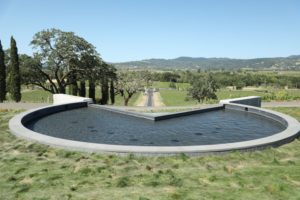

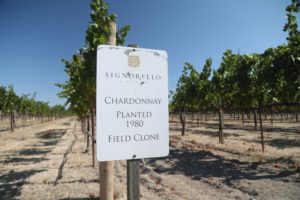 Signorello has weathered more than its fair share of hardships over the years. In 1990 some of their most valuable bottlings were on a wine services truck which was heisted while parked in San Francisco while the driver was eating. Fifteen years later in 2005, Signorello lost thousands of cases in the now infamous arson wine warehouse fire in Vallejo. We saw the photos of this disaster at the time; it was a significant hardship for numerous Napa wineries especially the new producers who lost their entire production. Fortunately, Signorello was able to recover, like most of the already established wineries affected by this fire. For an in depth look at this warehouse fire, read Frances Dinkelspiel’s Tangled Vines: Greed, Murder, Obsession, and an Arsonist in the Vineyards of California.
Signorello has weathered more than its fair share of hardships over the years. In 1990 some of their most valuable bottlings were on a wine services truck which was heisted while parked in San Francisco while the driver was eating. Fifteen years later in 2005, Signorello lost thousands of cases in the now infamous arson wine warehouse fire in Vallejo. We saw the photos of this disaster at the time; it was a significant hardship for numerous Napa wineries especially the new producers who lost their entire production. Fortunately, Signorello was able to recover, like most of the already established wineries affected by this fire. For an in depth look at this warehouse fire, read Frances Dinkelspiel’s Tangled Vines: Greed, Murder, Obsession, and an Arsonist in the Vineyards of California.
And this was not the last time the winery was affected by fire; in October 2017 the hospitality center, house, offices, lab and winery burned down. Signorello Estate was one of the very few Napa Valley wineries to burn to the ground that year and was one of the prominently featured wineries in news coverage of those devastating fires. We know of at least 3 other Napa Valley based wineries who suffered total building loss from fires that year including Helena View Johnston, Sill Winery and Wing Canyon.
Fortunately case goods were stored off site in a temperature controlled warehouse. Remarkably the fire did not burn their outside fermentation tanks, which still had wine in them at the time. A small also bonded winery building on the top of the hill above their cave also survived the fire. And their vineyards were spared damage; only 4 vines were lost on the entire property when part of a burning fence fell onto the plants.
In July 2018, a temporary 60′ x 12′ modular tasting room was moved onto the property until the winery and hospitality center were rebuilt. Making do with this temporary space for 6 years through April 2024, a reception area contained sofa seating with the seated tasting room next door. Small bites were paired with their current release wines.
In mid 2022 construction began to rebuild the winery, hospitality center and a nearly 11,500 square foot cave housing both production, offices, a lab and hospitality spaces. This was designed by Taylor Lombardo Architects with construction overseen by Sonoma County based Midstate Construction Corporation. During the building, they continued to produce a small amount of wine on the property while the majority of their production was at Laird Family Estate. The first harvest produced at the new winery was in 2024.
And based on the devastating fires in 2017 and 2020 in Napa Valley, wine caves (even short wine caves) were generally a very safe place for wine despite fires raging all around their entrances. The Signorello Estate cave features three entrance/exit portals, each secured by thick and heavy metal doors. A massive generator from Blue Star Power Systems, Inc., is housed in a separate space outdoors and can completely power the winery if needed. 100,000 gallons of water are stored on site in case of fire.
The cave is built with both function and aesthetics in mind. It features excellent lighting, an important requirement in indoor winemaking, tall ceilings and a high-tech air purification system made by Airocide. Products from this company were used by NASA on the International Space Station and the Columbia shuttle.
Small tanks, built by Bordeaux based Lejeune (we have been to their headquarters before) are sized to individual vineyard blocks but with extra space available for larger vintages. Several concrete tanks are also located on site, mounted on sizable concrete bases. During the installation of these, it was discovered that their height would compromise the existing stainless steel catwalk, so a portion of the catwalk had to be cut away to fit the tanks.
An integral part of their winemaking are the numerous OXOline® Rollers which offer a variety of functional advantages including the ability to open, clean, fill, rack and rotate each barrel without touching any other barrels. This is especially useful in regard to rotating the barrels when wanting to “stir” the lees (i.e. on their Chardonnay), rather than the accepted practice of battonage where a stainless-steel wand is inserted into the barrel and moved around by hand. Instead, one worker simply and easily rotates the barrel 360 degrees, allowing the lees to cloud up the wine and settle back down.
Glass windows and walls inside the cave were laser cut by a Canadian company and then installed including on the front of a separate portal called Ray’s Library, containing library wines from Ray’s personal collection stored on wine racks. One part of the cave is dedicated to custom crush winery clients. And another temperature controlled room within the cave is dedicated entirely to the Signorello barrel-fermented Chardonnay.
In April 2024 a series of solar cells were installed on a slope near the cave; these provide 100% of their electrical needs.
Hospitality
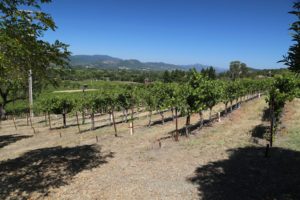
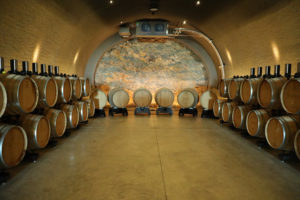
 One of the highlights prior to the 2017 Atlas Peak Fire of visiting Signorello Estate was their distinctive food and wine pairings. A full commercial kitchen used to be located on site; this will eventually be rebuilt. Seasonal vegetables and herbs grown on the property and were used by their chef. Sheep and goats graze parts of the property with more than 40 chickens on site.
One of the highlights prior to the 2017 Atlas Peak Fire of visiting Signorello Estate was their distinctive food and wine pairings. A full commercial kitchen used to be located on site; this will eventually be rebuilt. Seasonal vegetables and herbs grown on the property and were used by their chef. Sheep and goats graze parts of the property with more than 40 chickens on site.
Two experiences are currently offered, and both include an electric cart driven personalized tour of parts of the property with time taken to walk in the vineyards, enjoy the picturesque views and learn more about their farming practices. Signorello Estate Experience lasts 90 minutes with current release wines paired with a variety of artisan cheeses, dried fruits, nuts and some seasonal fresh fruits. And for a more in-depth experience, Padrone Heritage Library offers a rare taste of a vertical of older Padrone vintages with the entire experience lasting two hours.
Visitors are accompanied through parts of the cave with an overview provided of their winemaking practices. This also includes barrel samples of yet to be bottled wines; this is an ideal opportunity to try young wines.
With the completion of the cave, there are a number of spaces to host visitors including one dedicated portal for tastings. And eventually tastings can also be hosted outdoors, weather permitting next to the original pool with its great views overlooking the valley.
Customized golf carts are used to tour visitors around parts of the property including behind the winery. One is named Padrone and the other Hope.
—
Signorello participates in the Vancouver International Wine Festival held every year, typically in April or May. And every year they pour select bottlings at one of Napa Valley’s best but perhaps least known consumer wine events, the Napa Valley Wine Library tasting, held under the oak grove at Silverado Country Club.
The majority of their wines are sold direct to consumer through visits to the winery or a 6 or 12 bottle allocation membership. The remainder of the wines are distributed including in parts of Canada. For more information, to make an appointment and or to become an allocation member, or to purchase select wines, visit: www.signorelloestate.com
Cave
Exterior
Original Hospitality Center
(We keep these photographs for historical purposes)
Post fire, pool & patio

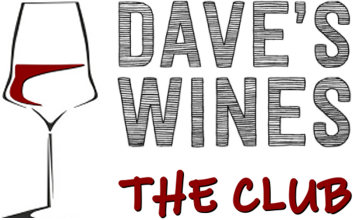




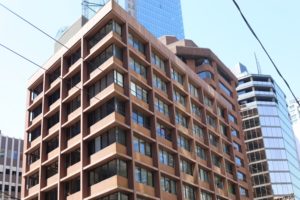
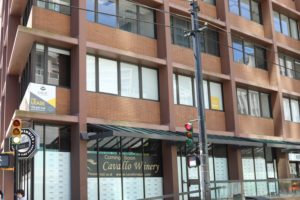
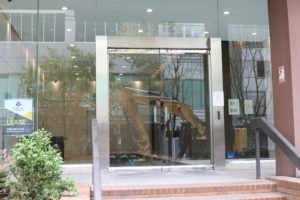

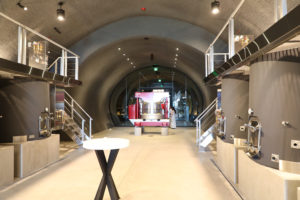
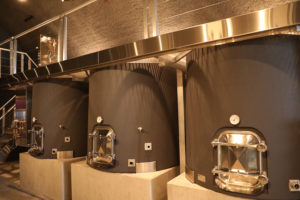





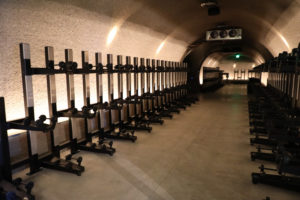
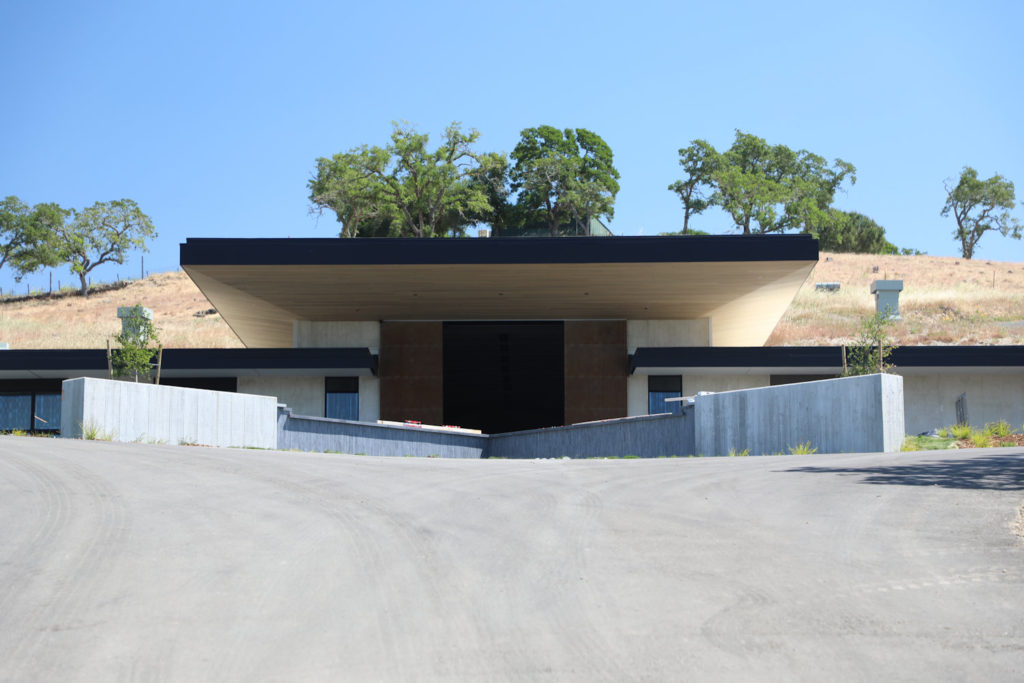
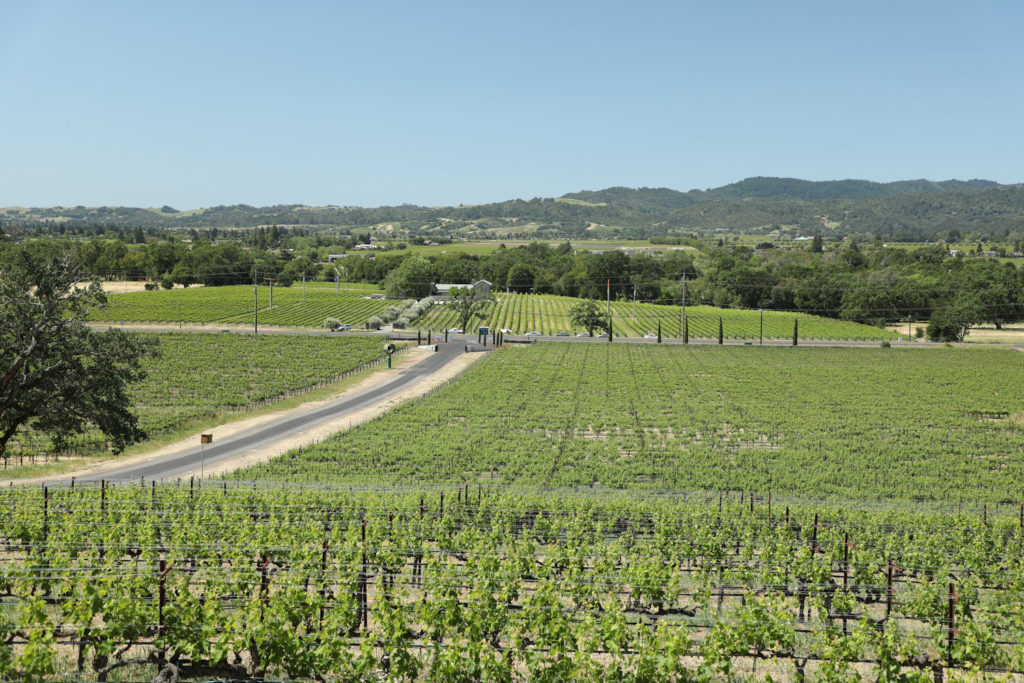
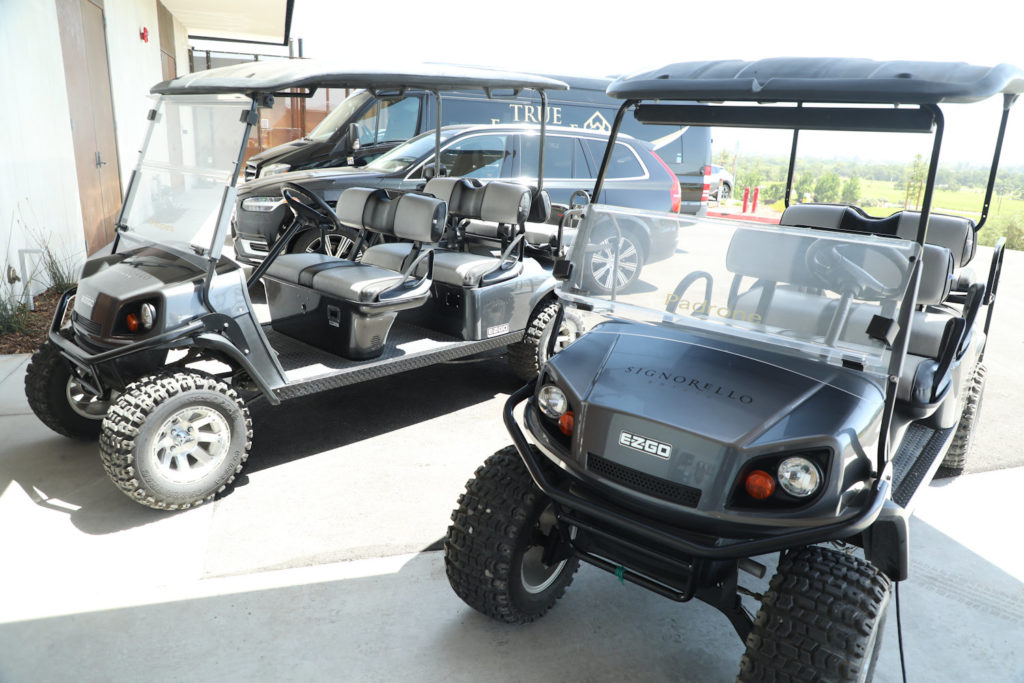
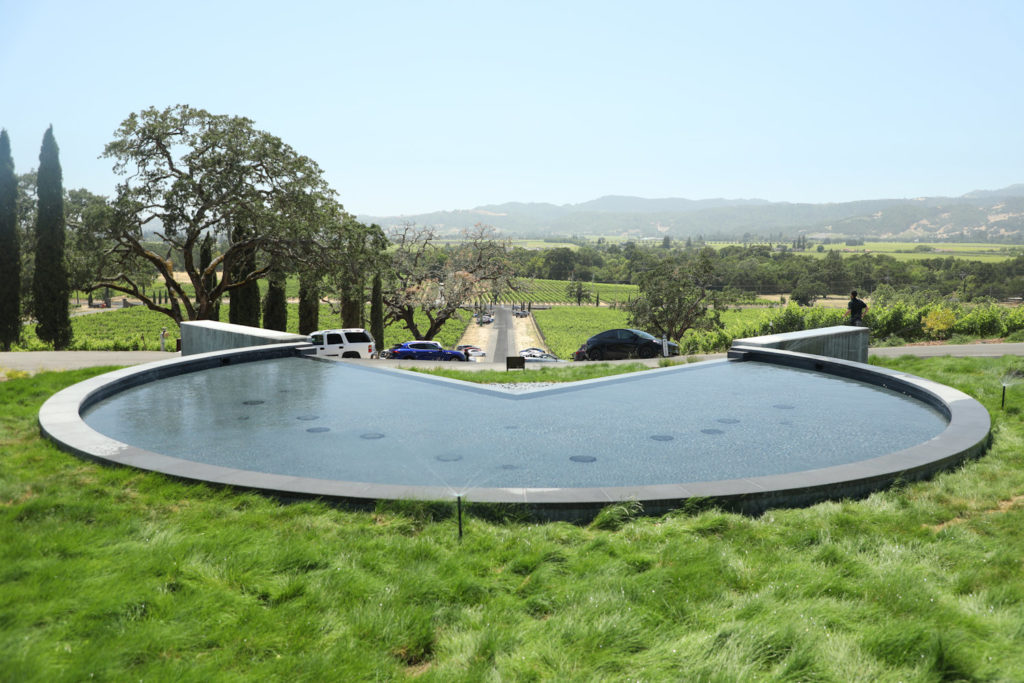
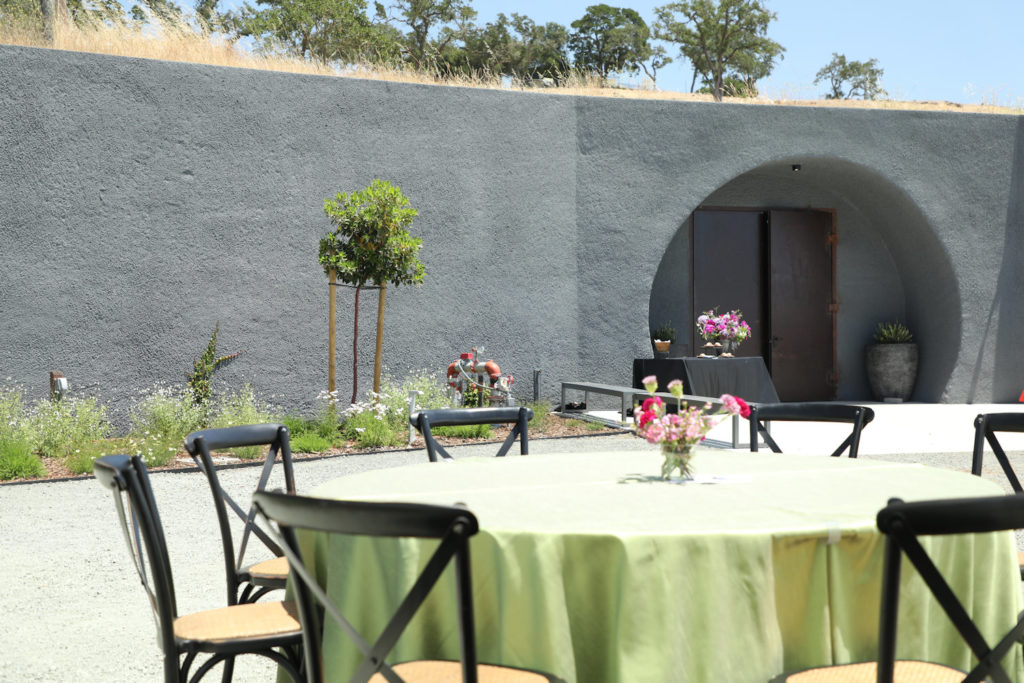

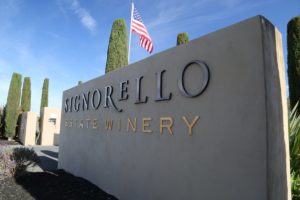

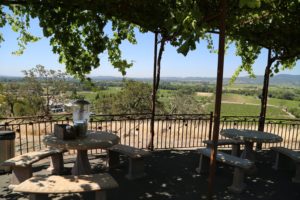
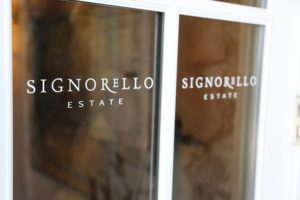
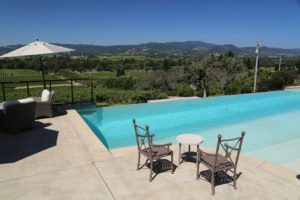
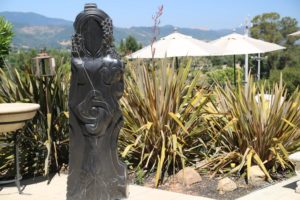

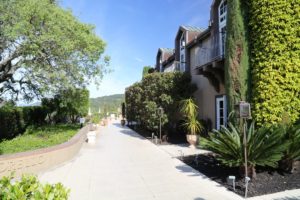
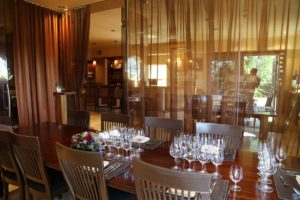
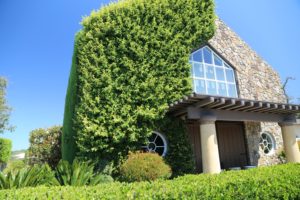
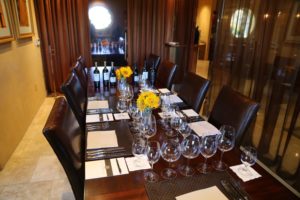
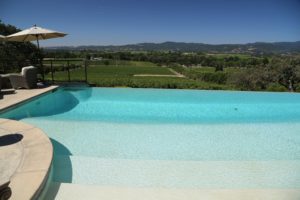
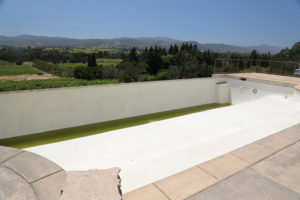
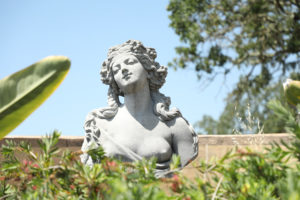
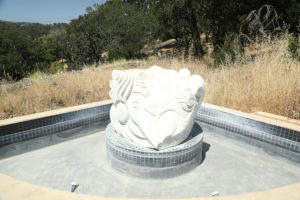
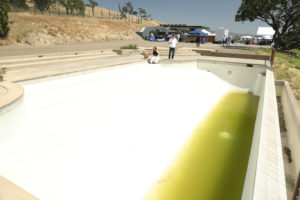
We are all hoping for a speedy recovering from the Atlas Peak Fire – this has been devastating to many homes and several select wineries including Signorello Estate (which lost both the winery and the hospitality center).
And we are looking forward to visiting again once the new winery and hospitality center is complete.
Hi Dave, We will be happy to host you as soon as we rebuild, The Covid-19 Emergency Situation added another delay to our construction. It will be more likely that we will be ready at the end of 2022. Please keep in contact. Thank you!
Edgar – very nice to hear from you, and thanks, Ill definitely take you up on that. Its just one thing after the next, isn’t it? :((((( Every time I drive by on the trail, I look up and send good thoughts 🙂 We may have met before, maybe a long time ago at Ceja. Cheers ~ Dave